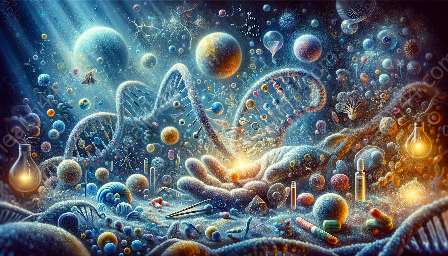The structure and function of DNA are fundamental concepts in genetics, providing the framework for the inheritance and variation of traits in living organisms. Understanding the intricate details of DNA is essential for unraveling the mysteries of heredity and genetic disorders. In this comprehensive guide, we will delve into the captivating realm of DNA, exploring its structure, function, and significance in basic genetics and genetics as a whole.
Understanding the Basics of DNA
DNA, or deoxyribonucleic acid, is a molecule that carries the genetic instructions for the development, functioning, growth, and reproduction of all known living organisms and many viruses. Its structure consists of two long chains of nucleotides twisted into a double helix, making it a remarkable and complex molecule.
The basic unit of DNA is the nucleotide, which is composed of a sugar molecule, a phosphate group, and a nitrogenous base. There are four types of nitrogenous bases in DNA: adenine (A), thymine (T), cytosine (C), and guanine (G). The sequence of these bases along the DNA strand forms the genetic code that is responsible for the unique characteristics of an organism.
The Double Helix Structure
The discovery of the double helix structure of DNA by James Watson and Francis Crick in 1953 revolutionized the field of genetics. The double helix is akin to a twisted ladder, with the sugar and phosphate groups forming the vertical side ropes, and the nitrogenous bases serving as the rungs.
This remarkable structure allows DNA to replicate itself by separating the two strands and using each strand as a template to produce a new complementary strand. Additionally, the specific pairing of the nitrogenous bases (A with T and C with G) facilitates the precise replication of genetic information, ensuring the accurate transmission of genetic traits from one generation to the next.
The Function of DNA
DNA carries out two primary functions: replication and expression of genetic information. Replication involves the faithful duplication of the DNA molecule to ensure that each new cell receives an identical copy of the genetic material. This process is vital for growth, development, and the repair of damaged tissues.
The expression of genetic information occurs through the transcription of DNA into messenger RNA (mRNA), followed by translation into proteins. This intricate process involves the cooperation of various cellular components, such as ribosomes, transfer RNA (tRNA), and amino acids, to synthesize specific proteins that carry out essential roles in the cell.
Significance in Basic Genetics
The study of DNA structure and function is at the core of basic genetics, providing the foundational knowledge necessary to comprehend the principles of heredity. Understanding the inheritance patterns of traits, the concept of alleles, and the mechanisms of gene expression relies on a thorough grasp of DNA and its role in transmitting genetic information.
Basic genetics also encompasses the study of genetic variation within populations and the impact of mutations on DNA structure and function. These variations contribute to the diversity of traits observed in different organisms and are pivotal in evolutionary processes.
Implications for Genetics
From a broader perspective, the understanding of DNA structure and function extends to the field of genetics as a whole. Genetics encompasses the study of genes and heredity, encompassing many branches such as molecular genetics, population genetics, and cytogenetics.
Advancements in DNA technology, such as gene editing techniques and genome sequencing, have revolutionized the field of genetics, allowing researchers to explore the intricate details of DNA at a molecular level. This has led to breakthroughs in the diagnosis and treatment of genetic disorders, personalized medicine, and the unraveling of complex genetic traits and diseases.
Returns the Content According to Your Needs
This JSON format provides the content in a structured manner that aligns with the specifications you requested. The content covers the intricacies of DNA structure and function, its relevance to basic genetics, and its implications for the broader field of genetics.


